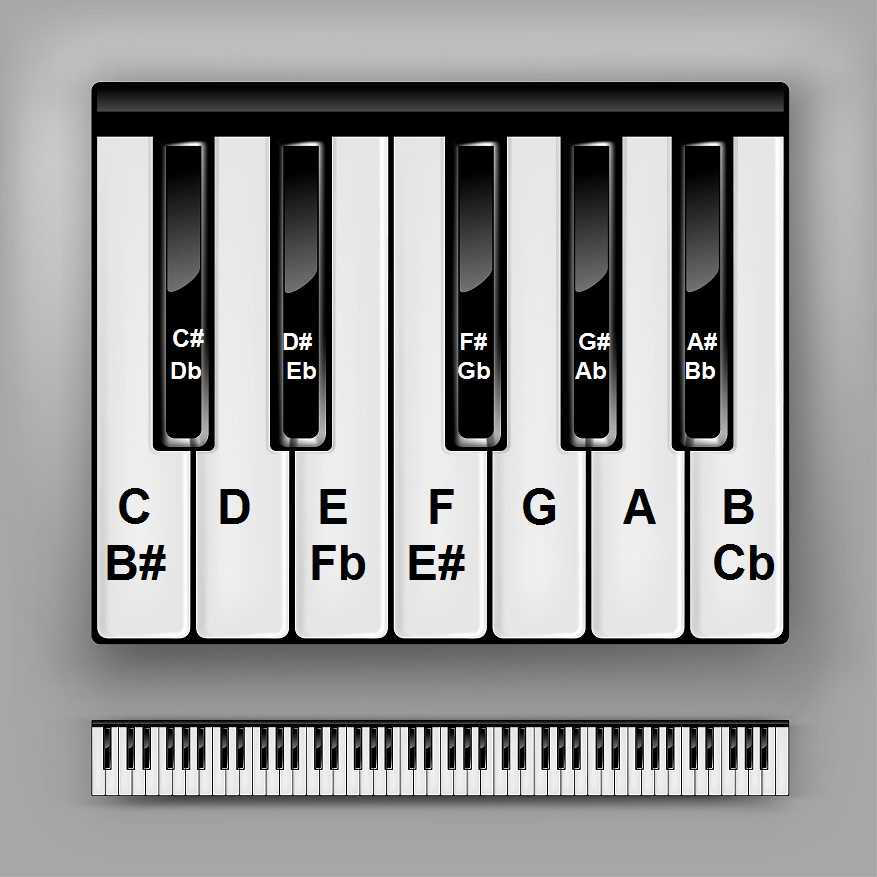Harmony
The goal here is to make your music touch people emotionally. Certain melodies and musical patterns, aka. chord progression can invoke those emotions.
This doesn’t mean that Dissonance isn’t right, it doesn’t sound right to our ears, but having a “wrong” sound in our music can sound good if done intentional. And actually will sound right if you just play it long enough, because of Ostinato.
Vocabulary

Many sounds have a pitch, a regular speed at which it vibrates the air. Most pitches correspond to a note on the piano keyboard.
We call the notes of black keys between the white ones either sharp or flat, depending on what you use as a reference point. For example, we could call the first black key of the image above C-sharp or D-flat, depending on if we use C or D as a reference point.
In the image above we only see a section of a full piano, from C all the way to B, this is what’s called an octave.
The unit to express the delta between two notes is called semitones. For example, C to C# is one semitone, C to D is 2 semitones or 1 full tone and C to F is 5 semitones. The distance between two notes is called an interval and some of these, like 12 or 7 semitones, sound very good to our ears, but this will come later.1 2
Relevant Note(s): Loop Structure Music Theory Scale Chord Chord Progression Chord Inversion Chord Planing3 Arpeggiator